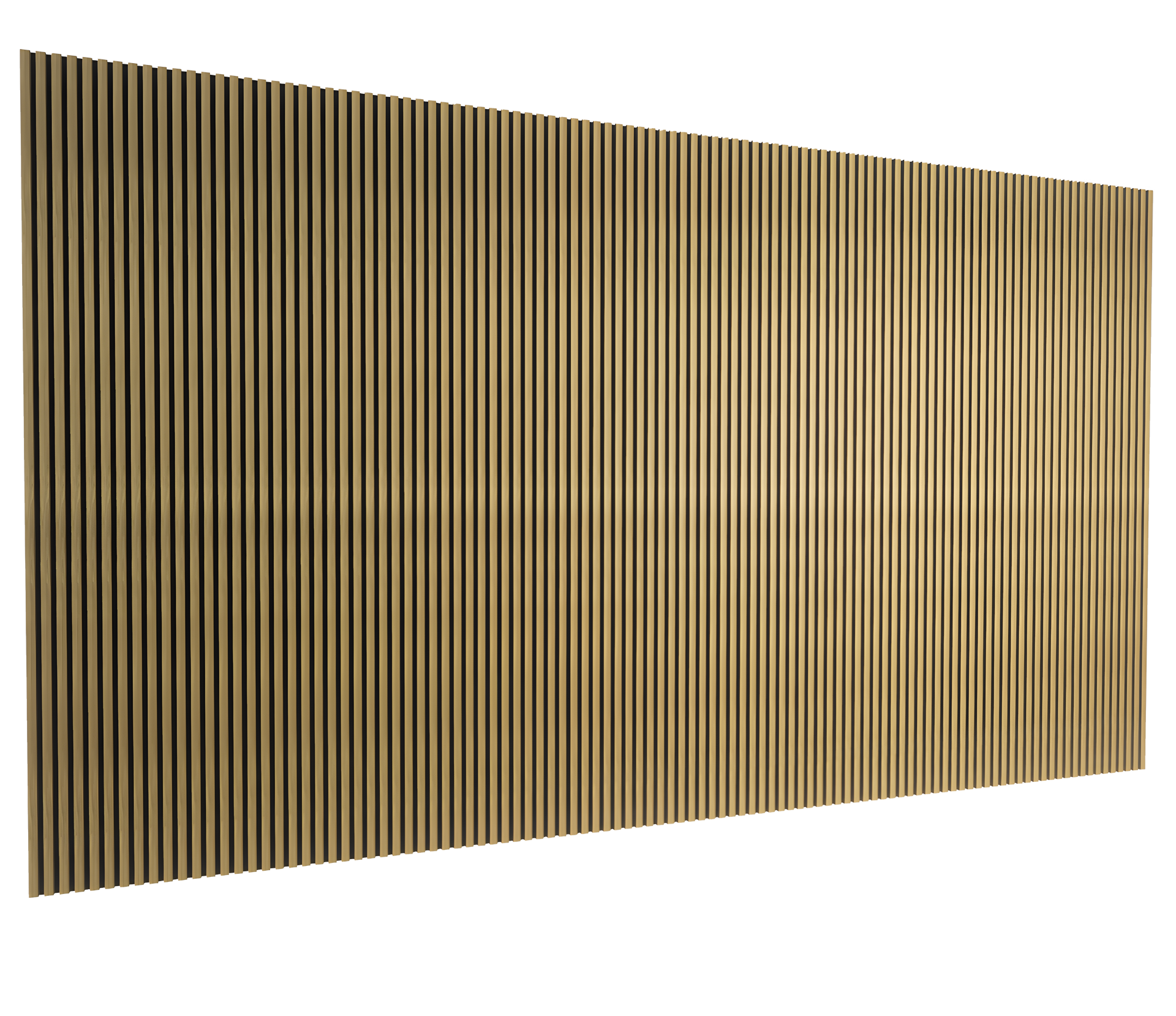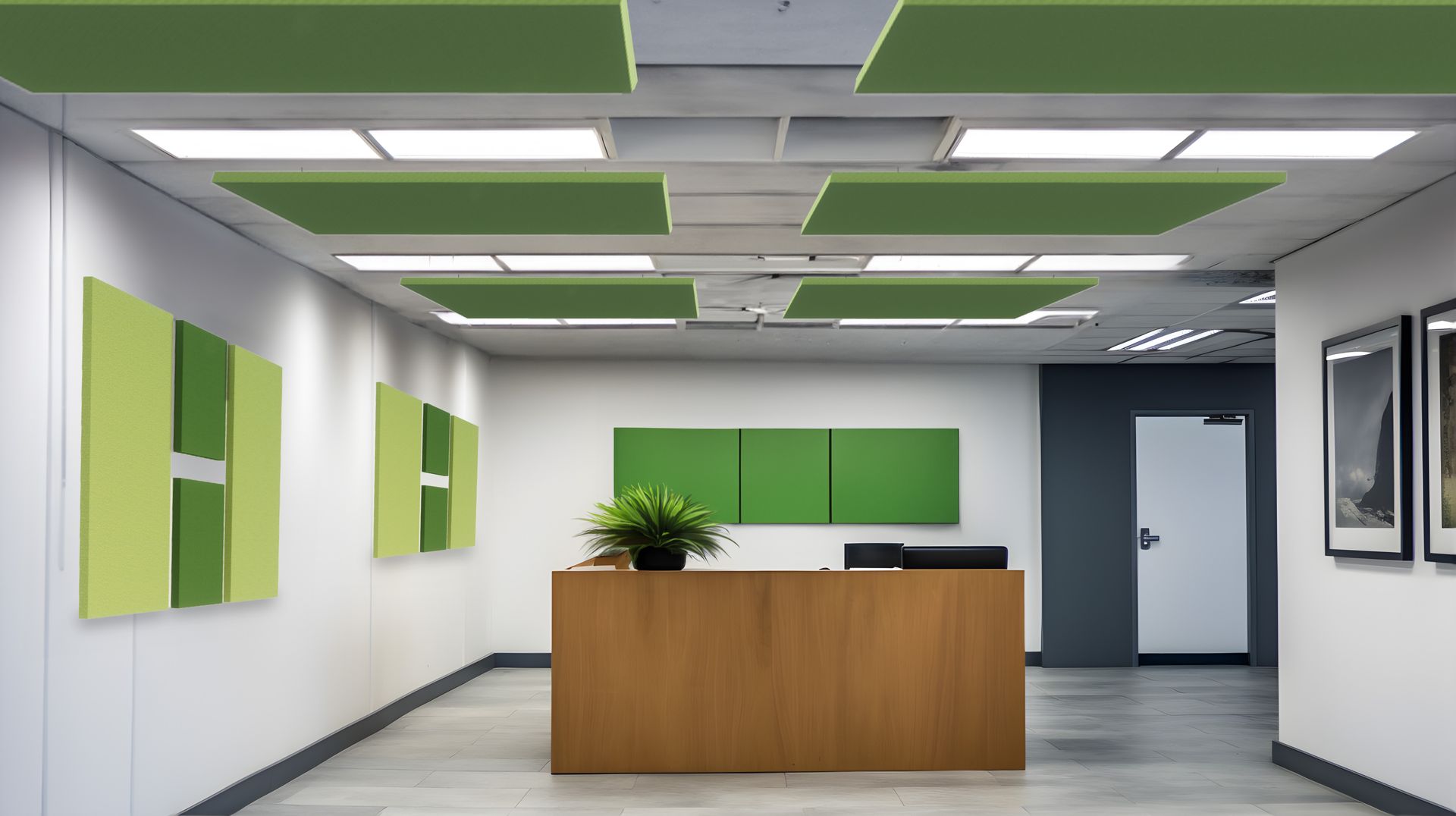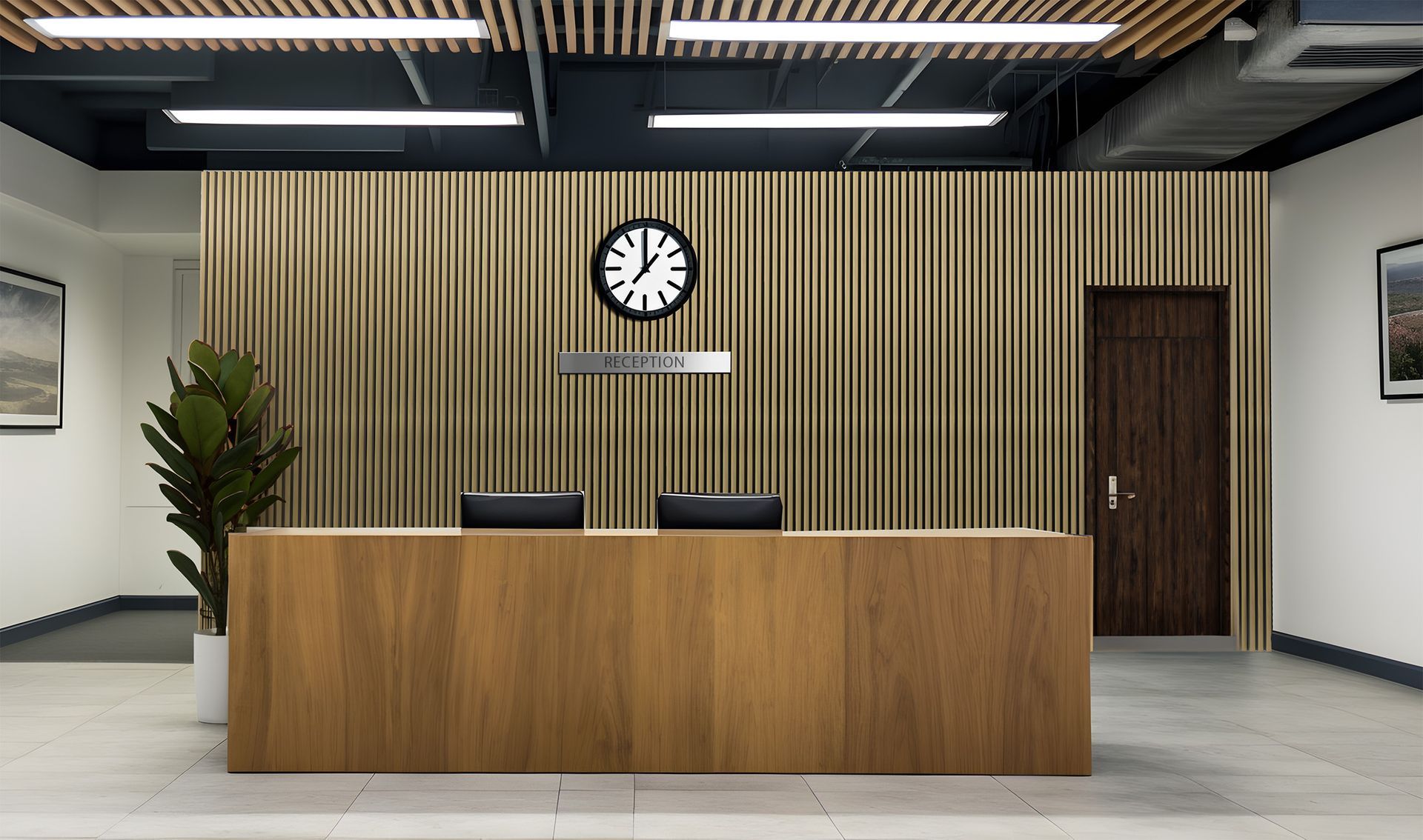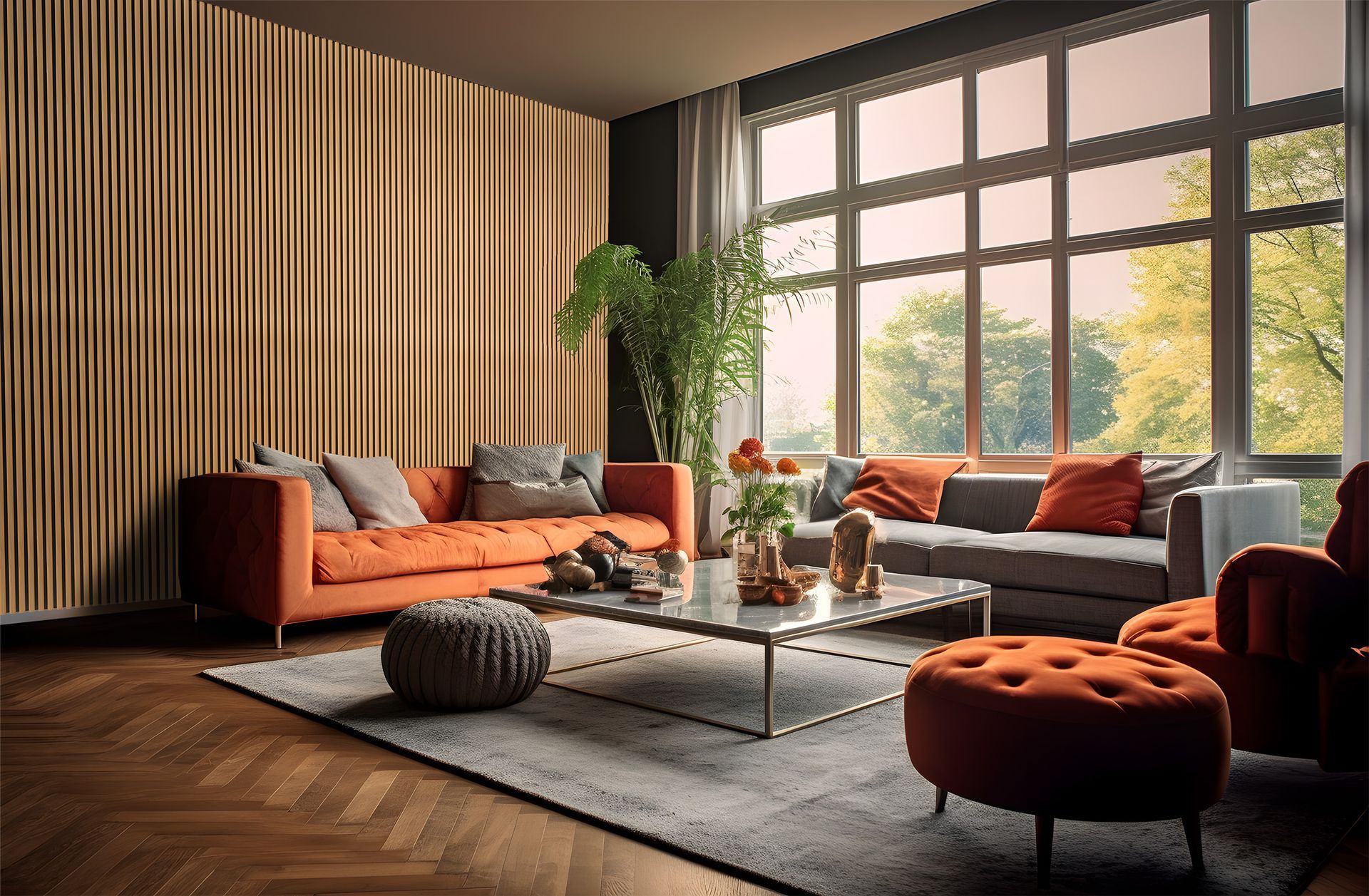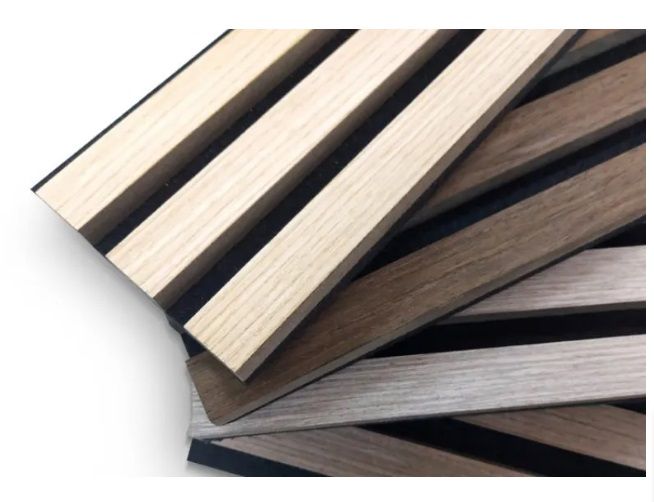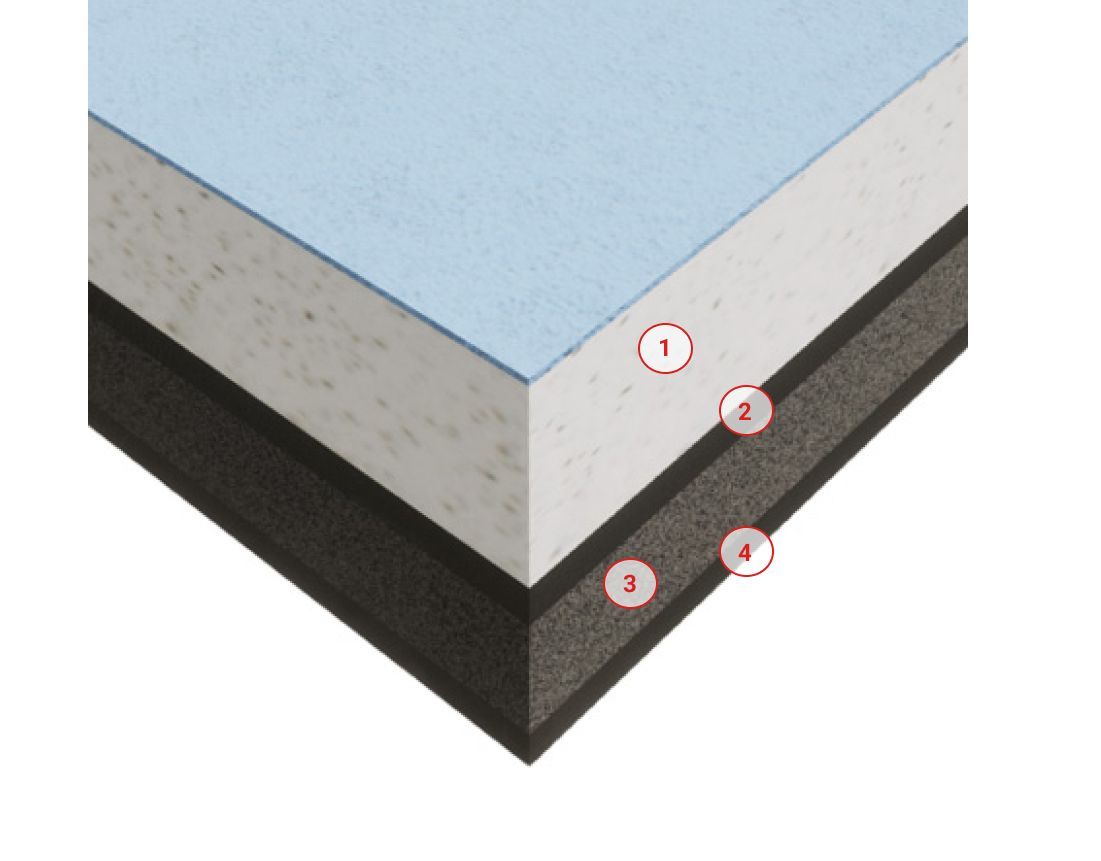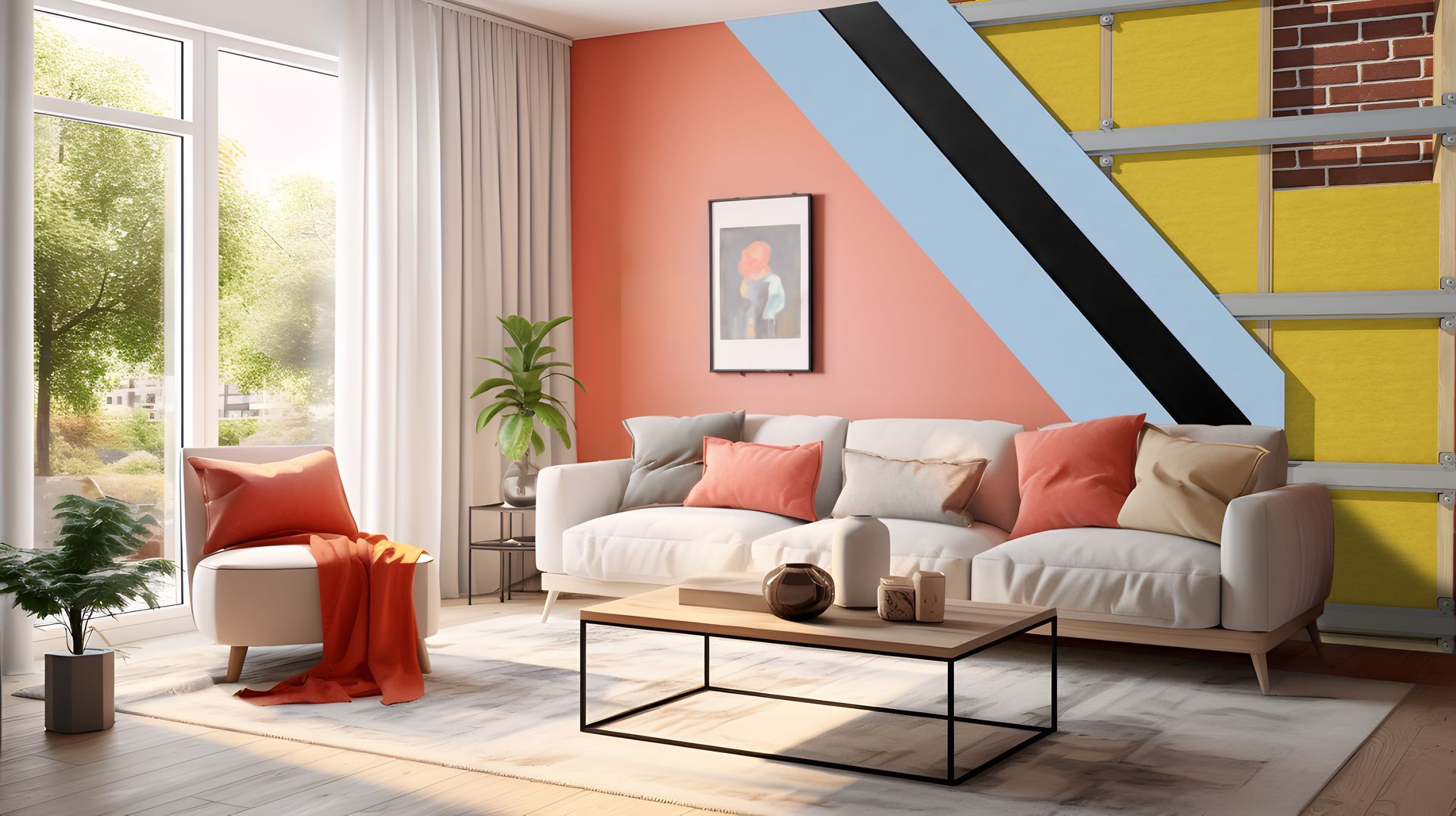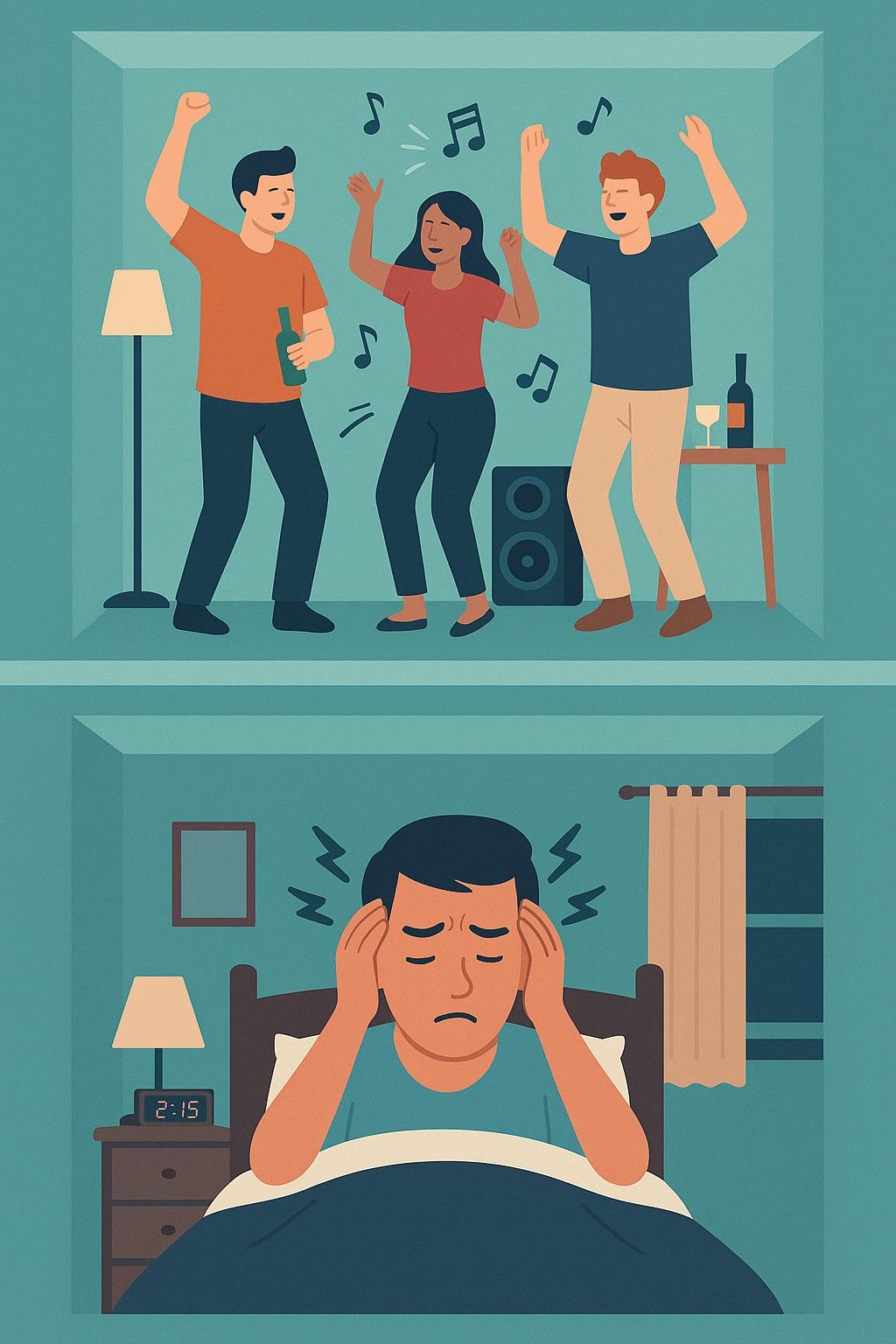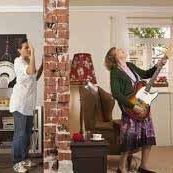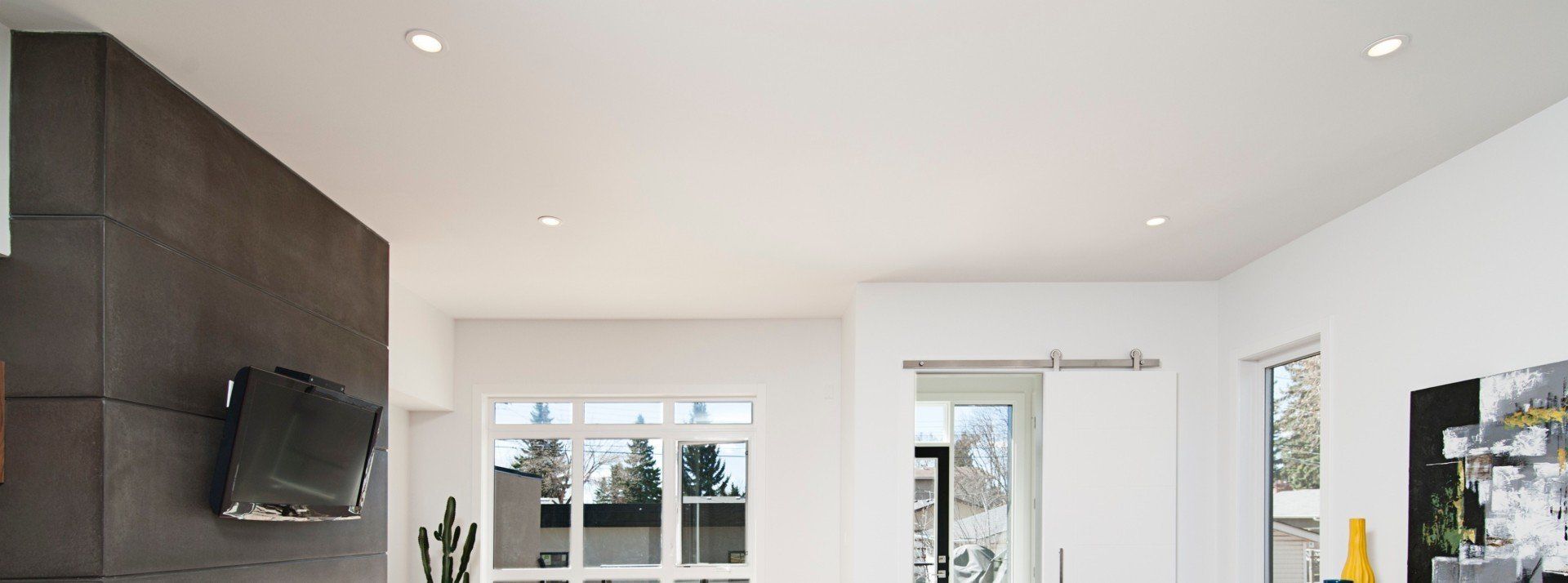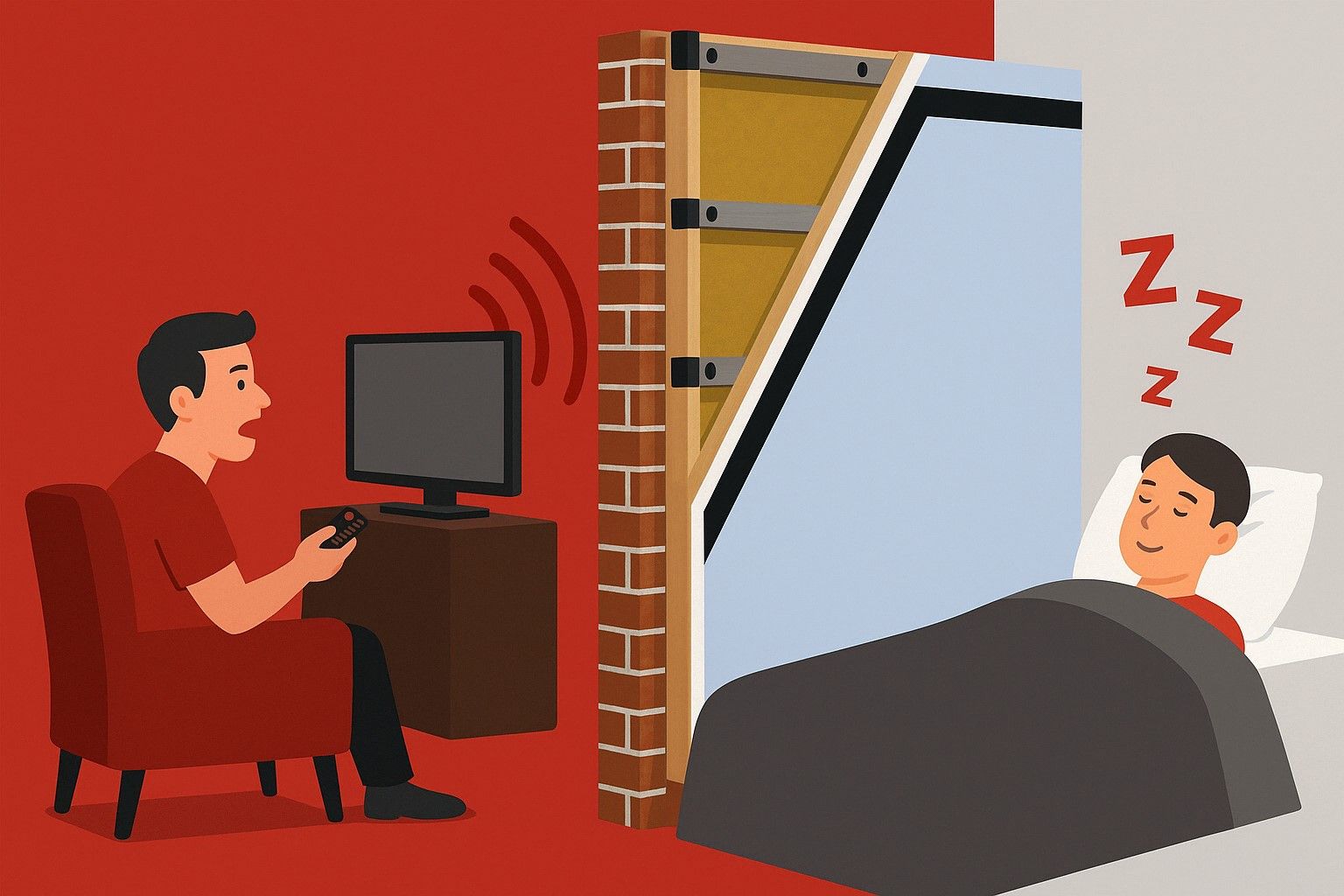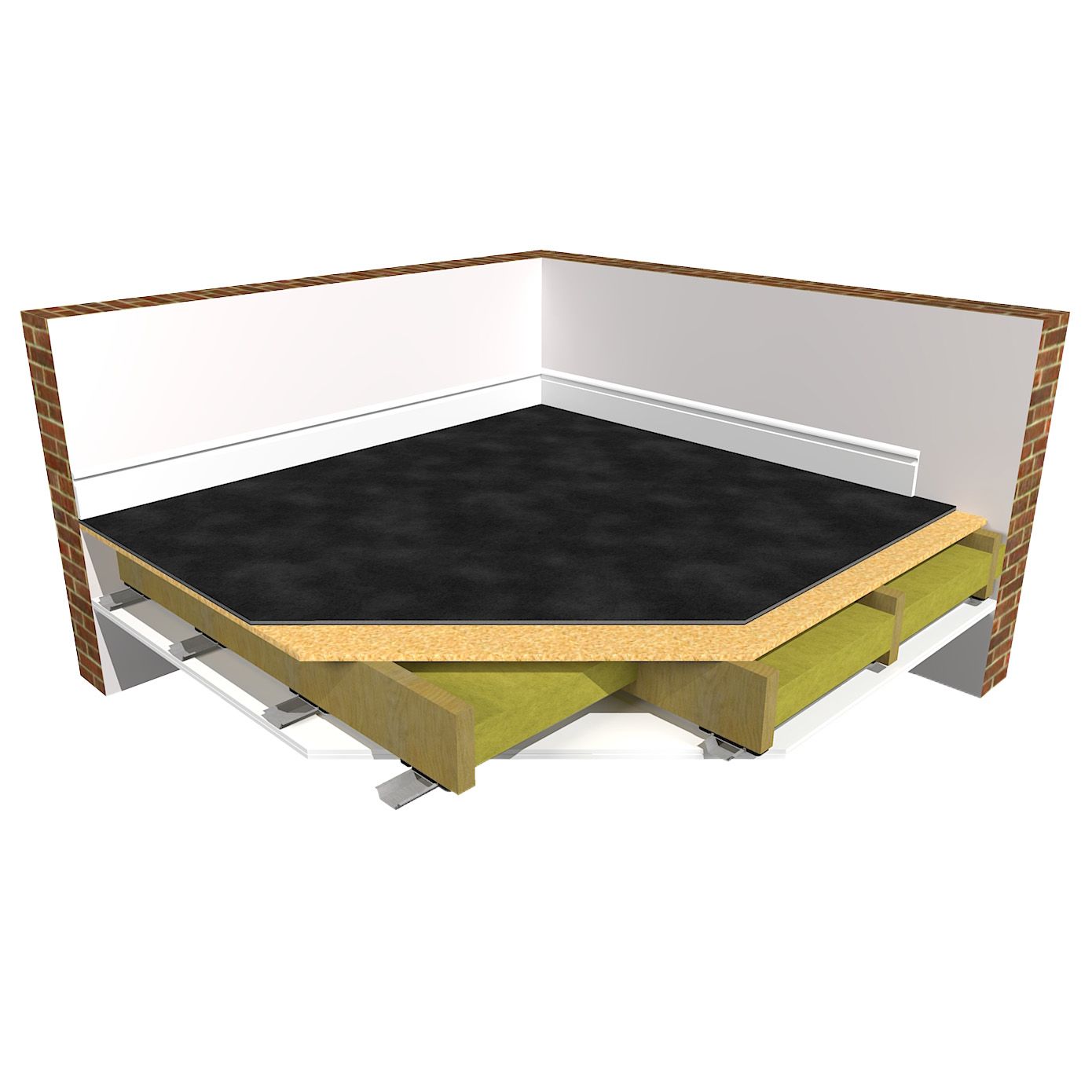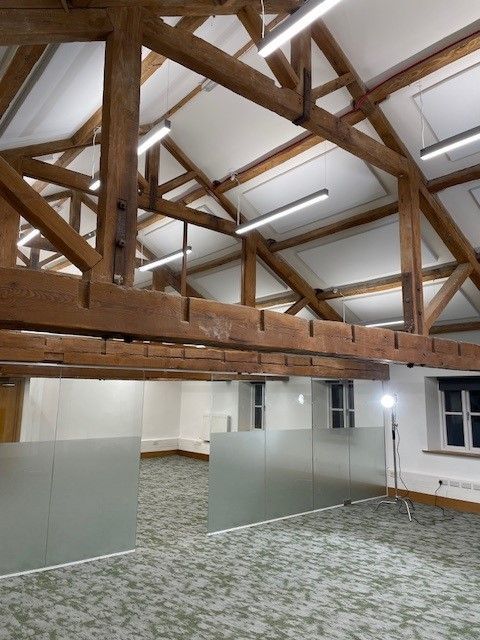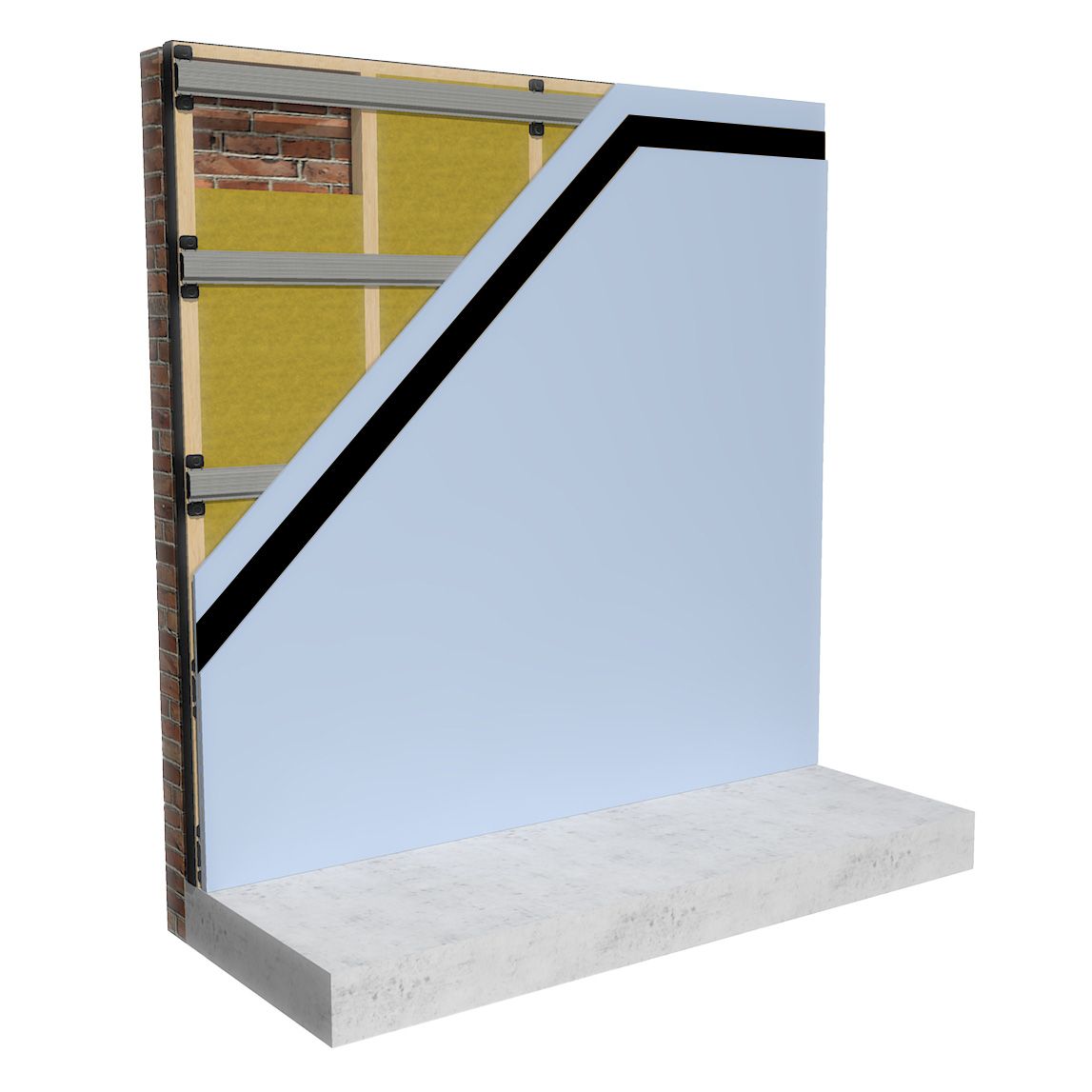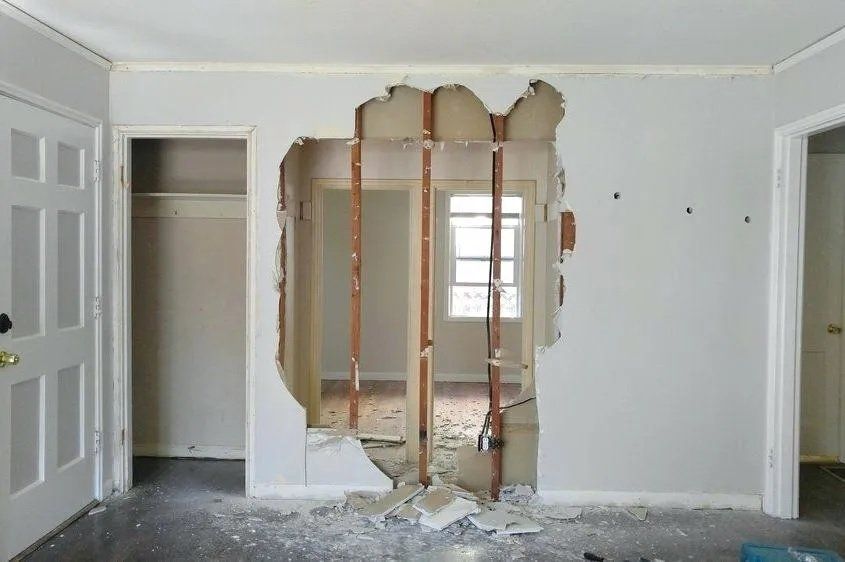Do Acoustic Wood Wall Panels Soundproof Against Unwanted Noise?
Soundproofing a room using acoustic timber slatted panels
Timber slatted acoustic panels can be effective for sound absorption and improving the acoustics within a space, but it's crucial to clarify that they are not designed to be an effective soundproofing solution. Soundproofing typically involves preventing sound from entering or leaving a space and acoustic panels are designed to absorb and dampen sound within a room, not to soundproof it.
Therefore, the function of acoustic timber slatted panels lies in absorbing and dampening sound within a room, not blocking its transfer in and out.
Wooden acoustic wall panels are a hugely popular design trend, elevating the aesthetics of walls and ceilings in a range of diverse settings, from residential and domestic DIY projects - to commercial refurbishments in restaurants, hotels and office spaces. The popularity of these panels is evident, with the
TikTok hashtag #WoodPanel amassing over 51 million combined views, making them a sought-after choice when seeking both style and functionality.
Acoustic slat wall panels are easy and quick to install and add a visual feature to any wall or ceiling space with many interior designers praising them for 'adding texture, warmth and bringing a more modern and contemporary style to any room'. Wood slat acoustic panels for walls and ceilings can also be used as a clever design technique. For example, when used vertically they help to contribute to the illusion of higher walls and increased ceiling height.
Acoustic timber panels are readily available through outlets such as
The Soundproofing Store, Acupanel, B&Q, and Amazon and are often marketed by other sellers as cutting-edge soundproofing solutions. However, whilst they bring a great modern design feature to a room and also help with sound absorption, they are definitely not a soundproofing solution. The reasons for this are discussed in more detail below.
The difference between soundproofing and sound absorption explained
What are acoustic panels?
Acoustic panels are specialist wall or ceiling treatments designed to improve the sound quality within a room by addressing issues such as echoes, reverberation, and unwanted noise within a space. Acoustic wall panels are commonly used in (various) settings, including open plan living spaces within homes, offices, studios, auditoriums, schools, and other places where controlling sound is important.
The primary purpose of acoustic panels is to absorb sound waves, preventing them from bouncing off hard surfaces and creating echoes. Sound absorbing acoustic panels contribute to creating a more balanced and controlled acoustic environment by reducing noise levels, minimising reverberation, and improving speech clarity.
Acoustic panels are typically made from materials with sound-absorbing properties and come in various shapes, sizes, and designs to cater to different aesthetic preferences and acoustic needs.
Sound absorbing acoustic panels can be strategically placed on walls and ceilings to target areas where sound reflection and reverberation are prominent. Additionally, acoustic panels are commonly used in recording studios, home cinemas, conference rooms, and open-plan offices to create an acoustically comfortable and controlled environment.
The most effective uses of timber slatted acoustic panels
Sound Absorption: Timber slatted panels are often used to absorb sound waves, reducing echo and reverberation within a room. This can improve the overall acoustics of a space, making it more comfortable and suitable for various activities.
Aesthetics: Timber slatted panels can contribute to the aesthetic appeal of a room while serving a functional purpose.
ProSound Acoustic Timber Slatted Panels come in 5 different veneer colour finishes, allowing for customisation to complement the overall design of any room.
Versatility:
Acoustic panels are versatile and can be used in various settings, including residential, commercial, and public spaces. They are commonly found in homes, hotels, offices, conference rooms, restaurants, and home cinemas.
Limited Soundproofing: While timber slatted panels can absorb and reduce sound within a room, they have serious limitations in terms of preventing sound transmission through walls or ceilings. If your goal is to block noise, it will be necessary to use tried and tested soundproofing measures, such as the
ReductoClip Soundproofing System which is highlighted in more detail below.
How do timber slatted panels help with sound absorption?
Revamping your space with timber slatted acoustic panels is a popular interior design trend and wooden acoustic panels are celebrated for their aesthetic appeal and ease of installation. These panels also help to improve the aesthetics within a room, making them a go-to choice for various settings.
However, if your aim is to tackle significant echo challenges, especially in expansive communal areas like village halls, offices, schools, hotels, and restaurants, while timber slatted panels add a visually striking touch and offer some echo reduction, they may not deliver optimal performance compared to specialised sound absorption panels. Let's delve into why this is the case:
Sound energy will bounce off hard surfaces back into a room, creating an echo. High performing
Class A Sound Absorption Panels are filled with a soft, specialist sound absorbing material, which absorbs sound and traps the sound inside. So when a sound wave hits the panel it stays there and doesn’t bounce back into the room.
Therefore, given this principle you might be asking, so how do wooden slatted timber panels absorb sound?
Timber acoustic panels have a layer of sound absorbing felt that sits behind the wooden slats which helps absorb sound. The surface area of the absorbing material isn't as large as traditional sound absorption panels like
ProSound Acoustic Wall Panels and the felt isn't the same high performing absorbent core, which limits their sound absorption capabilities.
In essence, while timber slatted acoustic panels contribute to an aesthetically pleasing environment and offer some acoustic benefits, for spaces with pronounced echo challenges, exploring alternative sound absorption solutions might be a more effective approach.
Specialised panels like the
ProSound Acoustic Wall Panels are designed with advanced acoustic principles to deliver superior performance in minimising echo and enhancing overall sound quality in any space.
Do timber slatted acoustic panels work for soundproofing?
Acoustic timber slatted panels are not soundproofing.
The term 'Acoustic Panels' is a generic term and can often be confusing for those people looking at solutions to soundproof their home. When looking at Acoustic Panels be sure to check if these relate to sound absorption panels or soundproofing panels like the
SoundBoard 4.
ProSound SoundBoard 4 Soundproofing Wall Panel
Timber slatted panels, while effective for certain acoustic purposes, do not provide the same level of soundproofing as materials specifically designed for that purpose. Timber slatted panels are often used for acoustic treatment, which focuses on controlling and improving the quality of sound within a space, rather than blocking or isolating sound from entering or leaving a room.
Here are some points to consider regarding timber slatted panels and soundproofing:
Absorption vs. Isolation:
Timber slatted panels are more geared towards sound absorption by minimising echoes and reverberation within a room.
Soundproofing on the other hand, involves preventing sound from travelling through walls or other structures, and this requires materials with different properties, such as mass and density.
Material Characteristics:
Timber slatted panels are designed for aesthetics and acoustic treatment, providing a visually appealing solution for managing sound within a space. Whereas effective soundproofing typically involves using materials with high mass, density, and damping properties to block or isolate sound transmission.
If your primary goal is to prevent sound transmission between rooms, you need to use a tried and tested soundproofing solution such as the
ReductoClip Soundproofing Solution for walls.
What is the best way to soundproof a wall?
If you're seeking soundproofing solutions instead of sound absorption, the video below proves exceptionally valuable. It delves into the top three wall soundproofing techniques, offering practical insights into the most effective noise reduction systems when soundproofing a party wall.
The 3 best ways to soundproof a wall
Achieving effective soundproofing for a wall involves a comprehensive understanding and application of three fundamental principles:
1. Isolation:
- A key principle in soundproofing is isolating or 'decoupling' one side of the structure from the other. This involves creating a sound breaker by minimising direct contact between the surfaces. By breaking the direct connection, vibrations and sound waves are less likely to transfer from one side to the other. This principle is crucial in preventing the transmission of sound vibrations
2. Damping:
- Damping is another essential aspect of soundproofing. Elastic or damping materials are strategically employed to absorb sound energy and vibrations, thereby reducing the extent to which these elements can travel through the structure. Damping materials play a crucial role in enhancing the overall effectiveness of soundproofing solutions.
3. Adding Mass:
- Increasing the mass of a wall is a fundamental strategy in blocking airborne sound. Different materials have varying densities and thicknesses, making them more effective at blocking different frequencies of sound. By incorporating materials with greater mass, such as
Acoustic Plasterboard and
FlexiSound, the wall becomes more resistant to the passage of airborne sound waves.
In summary, successful soundproofing involves a strategic combination of all three of these key principles. Isolation creates a sound breaker and minimises the direct transmission of vibrations, damping absorbs sound energy and vibrations, and adding mass enhances the wall's ability to block airborne sound.
The
ReductoClip Independent Wall solution is a tailored soundproofing solution which incorporates all three of these key principles and ensures the highest level of soundproofing.
ReductoClip Independent Wall Solution
Conclusion: soundproofing with acoustic timber slatted panels
Timber slatted acoustic panels offer an effective solution when combining wood effect interiors and also improving the acoustics within a space. However, it's crucial to clarify that they serve a different purpose compared to tried and tested soundproofing solutions. While timber acoustic panels contribute to the visual appeal of a room and offer some echo reduction, they do not help in the soundproofing of a room.
Timber slatted panels can be aesthetically pleasing and versatile, making them suitable for various settings such as homes, offices, hotels and restaurants. However, when it comes to true soundproofing—preventing sound from entering or leaving a space—specialised soundproofing measures are essential.
The ReductoClip Soundproofing Solution, with its principles of isolation, damping, and adding mass, ensures the highest level of soundproofing for walls (and ceilings).
Author
Sam Fessey heads up the Sound Absorption department within The Soundproofing Store. With a wealth of experience in acoustics, his extensive knowledge is invaluable when collaborating with customers to address and diminish reverberation and echo in any space and in creating environments with increased clarity and acoustic comfort.


